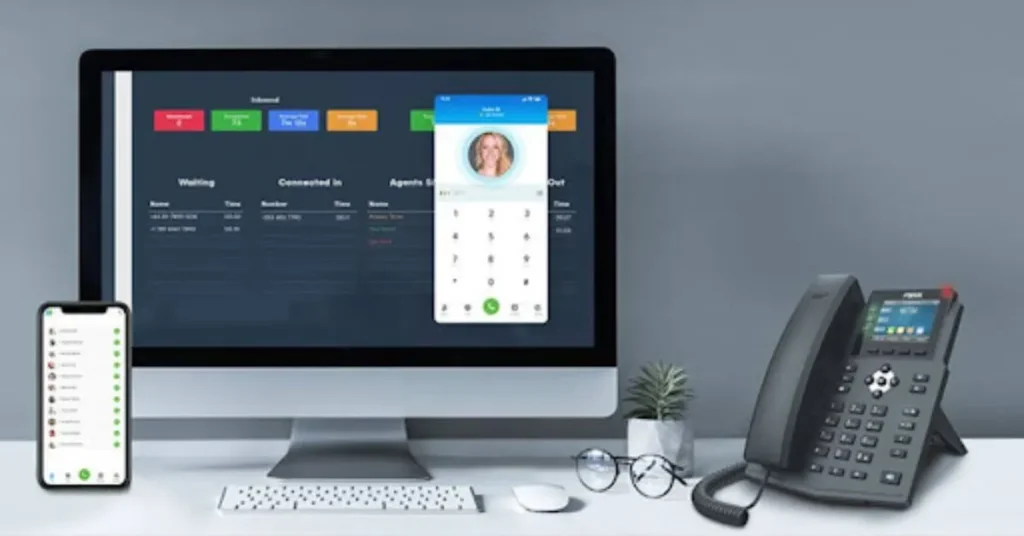In today’s interconnected world, effective communication is paramount, whether for professional endeavors or personal connections. Residential Voice over Internet Protocol (VoIP) service has emerged as a versatile solution, offering both work and home users a cost-effective, feature-rich alternative to traditional landline phone systems. In this comprehensive guide, we’ll delve into the intricacies of residential VoIP service, exploring its benefits, features, setup process, and best practices for optimizing its use in both work and home environments.
Contents
Understanding Residential VoIP
Residential VoIP service utilizes the internet to transmit voice calls, allowing users to make and receive phone calls using their broadband internet connection. Unlike traditional landline phones, which rely on copper wires, VoIP converts analog voice signals into digital data packets that are transmitted over the internet. This technology enables users to enjoy a wide range of features and functionalities at a fraction of the cost of traditional phone service.
Benefits of Residential VoIP
- Cost Savings: VoIP services typically offer lower rates for domestic and international calls compared to traditional phone carriers. This can result in significant cost savings for both work and home users, especially for those who make frequent long-distance calls.
- Feature-Rich Solutions: Residential VoIP providers offer a plethora of advanced features, including call forwarding, voicemail-to-email transcription, virtual phone numbers, and conference calling. These features enhance productivity and convenience for users in both professional and personal settings.
- Flexibility and Mobility: With VoIP, users can make and receive calls from anywhere with an internet connection, making it ideal for remote work, travel, or simply staying connected while on the go. Many VoIP providers also offer mobile apps that allow users to access their phone service from their smartphones or tablets.
- Scalability: VoIP systems are highly scalable, allowing users to easily add or remove phone lines and features as their needs evolve. This scalability makes VoIP an ideal solution for growing businesses or households with changing communication requirements.
Features of Residential VoIP
- Call Management: VoIP services offer a range of call management features, including call forwarding, call waiting, caller ID, and voicemail. Users can customize these features to suit their preferences and workflow.
- Unified Communication: Many VoIP providers offer unified communication platforms that integrate voice calling with other collaboration tools such as video conferencing, instant messaging, and file sharing. This consolidation of communication channels enhances productivity and streamlines communication workflows.
- Advanced Voicemail: VoIP voicemail systems often include advanced features such as voicemail-to-email transcription, allowing users to receive voicemail messages as text transcripts in their email inbox. This feature enables users to quickly review and respond to messages, even when they’re away from their phone.
- Virtual Phone Numbers: VoIP providers typically offer virtual phone numbers that users can assign to their VoIP service. Virtual phone numbers can be local or toll-free and allow users to establish a presence in different geographic locations without the need for physical offices.
Setting Up Residential VoIP
- Selecting a Provider: The first step in setting up residential VoIP is choosing a home VoIP provider. Consider factors such as pricing, features, reliability, and customer support when evaluating providers.
- Internet Connection: Ensure that you have a reliable broadband internet connection with sufficient bandwidth to support VoIP calls. A high-speed internet connection is essential for clear, uninterrupted voice calls.
- Choosing Equipment: Depending on your provider and preferences, you may need to purchase VoIP-compatible hardware such as IP phones or analog telephone adapters (ATAs). Alternatively, many providers offer softphone applications that allow users to make calls using their computer or smartphone.
- Configuration: Once you’ve selected a provider and acquired the necessary equipment, follow the provider’s instructions to configure your VoIP service. This typically involves creating an account, configuring your hardware or software, and assigning phone numbers and features.
- Testing and Troubleshooting: After configuring your VoIP service, test it thoroughly to ensure that everything is working correctly. Make test calls to verify call quality, test features such as voicemail and call forwarding, and address any issues or discrepancies that arise.
Best Practices for Using Residential VoIP
- Ensure Reliable Internet Connection: To maintain clear, high-quality calls, ensure that your internet connection is stable and reliable. Use wired connections whenever possible and avoid bandwidth-intensive activities during calls.
- Regularly Update Equipment and Software: Keep your VoIP hardware and software up to date with the latest firmware and software updates to ensure optimal performance and security.
- Backup Power Supply: In the event of a power outage, ensure that your VoIP equipment has a backup power supply or battery backup to maintain service availability.
- Implement Security Measures: Protect your VoIP service from security threats by implementing strong passwords, enabling encryption where available, and regularly monitoring for suspicious activity.
- Explore Advanced Features: Take advantage of the advanced features offered by your VoIP provider to enhance productivity and efficiency. Experiment with features such as call forwarding, voicemail transcription, and virtual phone numbers to find what works best for you.
Conclusion
Residential VoIP service offers a cost-effective, feature-rich solution for both work and home communication needs. By understanding its benefits, features, setup process, and best practices, users can harness the full potential of VoIP to streamline communication, increase productivity, and stay connected in an increasingly digital world. Whether for remote work, personal connections, or a combination of both, VoIP represents a versatile and reliable solution for modern communication needs.

